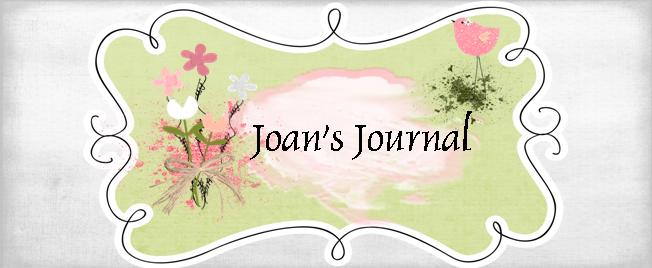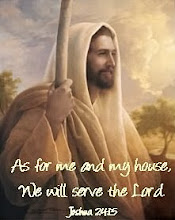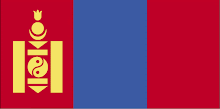We had the wonderful opportunity to go to the Hong Kong Temple with 10 church members. The Mongolians traveled by train, but we needed to go by airplane because we don’t have visas for China. The Mongolians apparently don’t need a visa to cross China, but they were still questioned upon leaving China and going into Hong Kong. Traveling by train took 3 days each way, but flying took 1 day including a long layover in Beijing. We arrived in Hong Kong the evening of Thursday January 21.
Friday morning Bernard Pang over finance for the Asia Area met us outside the Hong Kong Temple, took us into the mission office, and drove us to the Area Office building on Hong Kong Island. He showed us around the Area Office to meet people. We met Elder Perkins and Elder Pratt from the Area Presidency, Elder and Sister Whitman who spent over a month in Mongolia last November, Elder and Sister Gibbons who had previously served a mission to Mongolia, and others. That day we discussed mission finances and IMOS, the new internet mission office system.
At noon Elder and Sister Whitman took Bernard and us to lunch at a Thai restaurant. The food was very good. Later in the afternoon the Whitmans took us to the Central Building which is very tall where we could see views of the city. There are many tall buildings in Hong Kong. What surprised us were the tall hills in the background.
Hong Kong is an impressive city. It is very modern and very clean. There are many people. It looked familiar. Watching the people looked just like seeing people in California. Hong Kong is a dual language city – Chinese (Cantonese) and English because of the English occupancy. Every one is very friendly and helpful. If you appear lost, they go out of their way to help you. There is always someone who can speak English. I think less than half speak English, but many do.
There are many buses. The buses that go from one area to another are double decker buses. Between the buses, the subways, and the taxis, you can very easily live there without a car. We added money to an Octopus card. That way we didn’t need to fish out the exact amount of money every time we took public transportation since they don’t give change.
From the Area Office building we walked with the Whitmans to their apartment. It was interesting walking through a wet market. Various foods were on display for sale next to the sidewalk – fruits, vegetables, and fish, including live fish. It is called a wet market because every night the sidewalks and streets are hosed down. The Whitmans work in the Hong Kong Temple on Friday nights. After eating supper with them, we rode a bus with them back to Kowloon Tong where the temple is located and attended an endowment session in English at 7 p.m.
Saturday morning we went back to the temple and attended an endowment session at 9 a.m. in Chinese. Then we participated in sealings of couples officiated by President Yip from Ukiah, both in English and Chinese. We were happy to see President Yip; we hadn’t seen him since he left Ukiah three years ago.
At noon we walked to the Festival Walk mall and ate lunch at McDonalds, following by attending another endowment session at 2 p.m. in English. At that time we didn’t realize there was a grocery store on one of the lower levels of Festival Walk so we went to Lok Fu to buy a few groceries. Then we went back to the patron housing to wait for the people from Mongolia to arrive. They didn’t arrive at the housing until 11 p.m.
The old patron housing across the street from the temple has been torn down and new patron housing has been constructed, but it is not available for occupancy yet. The church has rented two apartments next to each other several blocks from the temple. One apartment had bunk beds for 10 women, and the other apartment had bunk beds for 10 men. The apartments left much to be desired.
Hong Kong is extremely humid; nothing dries. The patron housing did not have a dryer so I didn’t wash anything because I didn’t think it would dry. Hong Kong was also overcast every day we were there although the weather was pleasant. We didn’t see the sun until Saturday. We did a lot of walking in Hong Kong.
When Wes and I arrived at the patron housing there was a couple Jay and Dana Thenlin who are teaching English in China through a BYU program. In fact at the end of the week a conference was held in Hong Kong for all of the English teachers in the BYU China program. Helen was also at the patron housing who is teaching English independently in China.
In addition there was a lady from Beijing by the name of Christine. At some time in the past she applied for admittance to attend a university in the U.S. She was admitted in Utah. I don’t remember the first school she attended, but then she went to the University of Utah. Eventually she went to BYU and graduated from there and joined the church. She works as a freelance translator in Beijing. She uses half of her income each month to go to Hong Kong once a month and attend the temple.
Our group from Mongolia consisted of the following people besides us.
Duger (Дүгэр), his wife Lkhamsuren (Лхамсүрэн), his 11-year old daughter Lkhagvamaa (Лхагвамаа), and his 9-year old son Dalaitseren (Далайцэрэн).
Bayardelger (Баярдэлгэр), his wife Oyunchimeg Оюунчимэг), his 2-year old son Munkhdelger (Мөнхдэлгэр), and his mother-in-law Jugder (Жүгдэр).
A 25-year old girl Uranbileg (Уранвилэг).
The tour guide Odgerel (Одгэрэл), called Ogii.
They were a great group to be with. On Sunday morning we attended a sacrament meeting on the first floor of the temple – some floors are for church meetings and other floors are dedicated as part of the temple. A lady in the ward translated the meeting from Chinese to English, and Ogii translated it from English to Mongolian for our group. We only stayed for sacrament meeting because the Mongolians would not be able to understand the rest of the meetings. In our room we held our own meeting which lasted about an hour where we went around the circle and everyone shared his own thoughts and testimony.
Monday is a day the temple is closed. Brother Chan, a worker in the Hong Kong temple, took the group on a tour of Hong Kong. Apparently he has taken every Mongolian group who has come to the temple on a tour; that is very generous of him.
We took the subway and walked along the Arcade of the Stars, we crossed the bay on a ferry, we went up in the Central Building to view Hong Kong, we went to the Area Office building, and we took a bus climbing up a hill to Victoria Peak, the highest point overlooking the city, to view more of Hong Kong. When the Hong Kong Mission was opened in 1949, Elder Matthew Cowley opened the mission with a prayer on Victoria Peak.
Tuesday morning was the first day the group went to the temple. We began with a meeting with President Heaton at 8:30 a.m. in the morning. Then the 6 adults were able to receive their own temple ordinances (Ogii has been to the temple before). I believe the endowment session was in Mongolian for them. I babysat the children on floor 1 in the Primary room so the children would be available to be sealed to their parents.
Later on they brought the children upstairs to the 5th floor, where the sealing rooms are, to be dressed in white and be sealed to their parents. Temple workers watched the children at this time, and I was able to go in and see the sealings. It was wonderful seeing the couples sealed to each other and the children sealed to them.
The Mongolians spent the day in the temple doing temple work. They attended the temple every day through Saturday that week. Oyunchimeg’s mother, Jugder, had problems getting around and did not attend the temple every day. When Jugder stayed in the apartment, she watched Munkhdelger. Lkhvamaa and Dalaitseren were able to watch themselves in the Primary room.
We were able to attend the temple every day we were there although on a couple of occasions we were also with the children.
The design of the Hong Kong Temple is interesting. The temple is accessed from the front door, and you go up an elevator to the third floor. Other areas of the building are accessed from a side door. If I have this right, floor B1 has rooms for a ward and also a lunch room which can only be accessed by people attending the temple. Floor B2 is partially a baptistery, and the other part is a FHC. Floor 1 has a chapel and rooms for a ward. Floor 2 has apartments for the temple president and the mission president. It also has the mission office. Floor 3 is the main floor of the temple and has offices and the men’s dressing rooms. Floor 4 has the women’s dressing rooms, two ordinance rooms, and the celestial room. Floor 5 has the sealing rooms. It is difficult to get around in the building because elevators only go to certain floors so people who do not have a recommend to go to the temple cannot enter where they should not. Since the temple needs more room, the mission president’s apartment and the mission office will be moved across the street. The mission office was very small.
The temple, as is Hong Kong, is Chinese and English with headphones for about 8 languages to accommodate the people who come to the temple. The people come from the Asia Area plus visitors.
There are three church areas in Asia – the Asia Area, the Asia North Area (Korea and Japan), and the Philippines Area. The Asia Area has over ½ of the world’s population. It covers the countries of Afghanistan, Bangladesh, Bhutan, Brunei, Burma, Cambodia, China, Hong Kong, India, Indonesia, Laos, Macau, Malaysia, Mongolia, Nepal, Pakistan, Singapore, Sri Lanka, Taiwan, Thailand, and Vietnam.
The 10 missions in the Asia Area are Cambodia Phnom Penh Mission, China Hong Kong Mission, India Bangalore Mission, India New Delhi Mission, Indonesia Jakarta Mission, Mongolia Ulaanbaatar Mission, Singapore Mission, Taiwan Taichung Mission, Taiwan Taipei Mission, and Thailand Bangkok Mission.
Tuesday evening a lady and her 12-year old son came to the housing from China. The son did about 100 baptisms each morning for about 3 days. The son’s name was Fengzijie. They were from Paniu, Guangzhou in China.
Wednesday afternoon we walked the girl Lkhagvamaa and her brother Dalaitseren around the Festival Walk mall. It is a very fancy mall. It has many floors. We even walked through a toy store and got them food at McDonalds. They live in a ger in Bagnuur. Hong Kong is so different from their experience I don’t know what they thought of everything.
On Thursday we went with the Thenlins who took Lkhagvamaa and Dalaitseren out to lunch at an Italian restaurant. The food was a little spicy for the children. We rode a bus around Hong Kong Island to see the city. Wes wasn’t feeling well this day; he’d passed a kidney stone the night before, so we just rode a bus.
Thursday evening a girl Poongothai.G (Hima), who was married two days earlier, her new husband, and her parents came to the temple from India. It appears she goes by one name as they do in Mongolia, but the initial is from her father’s name and changes to the initial of her husband’s name when she marries. In Mongolia the initial stays the initial of the father’s name.
She said she was married by the government and now she is going to be married by God. We communicated in English. In the temple the girl listened in English, but the parents and her husband listened in Tamil. The parents and girl have been members of the church in India for about 13 years. The mother said she has been a Relief Society president for 10 years. The girl has been a Primary and Young Women’s president. They said every state (27 states) in India speaks a different language; they communicate between the states in English. They were from the district of Coimbatore and the state of Tamilnadu. They are in the India Bangalore Mission.
Friday we met with Elder and Sister Kau again and with Bernard Pang to discus mission finances and the new mission program IMOS. We appreciated the information we received from them. Sister Kau gave me prints of a picture she’d drawn of the Hong Kong Temple. Friday night Bernard took Wes and me and Elder Kau out to dinner at a Chinese restaurant in the mall. I think the name of the restaurant was House of Canton. The food was wonderful. We loved the food in Hong Kong.
The church members in Hong Kong are very kind to the people who come to the temple. They gather large bags of clothes and let the people in the patron housing choose what clothing they would like. They even provided stuffed animals for the little boy. Lkhagvamaa needed shoes and found a pair of shoes in the bag as well as clothes. This was really nice of the church members because the people who stay at the patron housing do not have much.
Before we left, Sister Goo, the temple president’s wife, presented bags to Lkhvamaa and Dalaitseren with goodies and toys. Lkhagvamaa’s bag also had a dress in it for her.
Saturday our last day in Hong Kong after an endowment session and sealings in the morning we went out to Stanley Market to look at nice souvenirs. We were also going to see the Big Buddha, but it was too late in the afternoon by the time we got there.
Sunday morning we left Hong Kong to return to Ulaanbaatar by way of Beijing. We were at the airport by 7 am for a 9 am flight, but they’d already given away our seats; they probably overbooked. Instead we left at noon. They gave us Hong Kong dollars to make up for the delay. Actually the delay was fine with us because we preferred spending time in the Hong Kong airport instead of the Beijing airport.
The office elders, Elder Whittle and Elder Sherwood, kindly picked us up at midnight Sunday January 31. When we landed, the pilot announced it was -30° C (-22 ° F) in Ulaanbaatar. Hong Kong had been about 24° C (75° F), a difference of 54° C or 97° F.
New Adventure, New Blog
11 years ago






1 comments:
It sounds like you were very busy, but what a wonderful experience!
Post a Comment